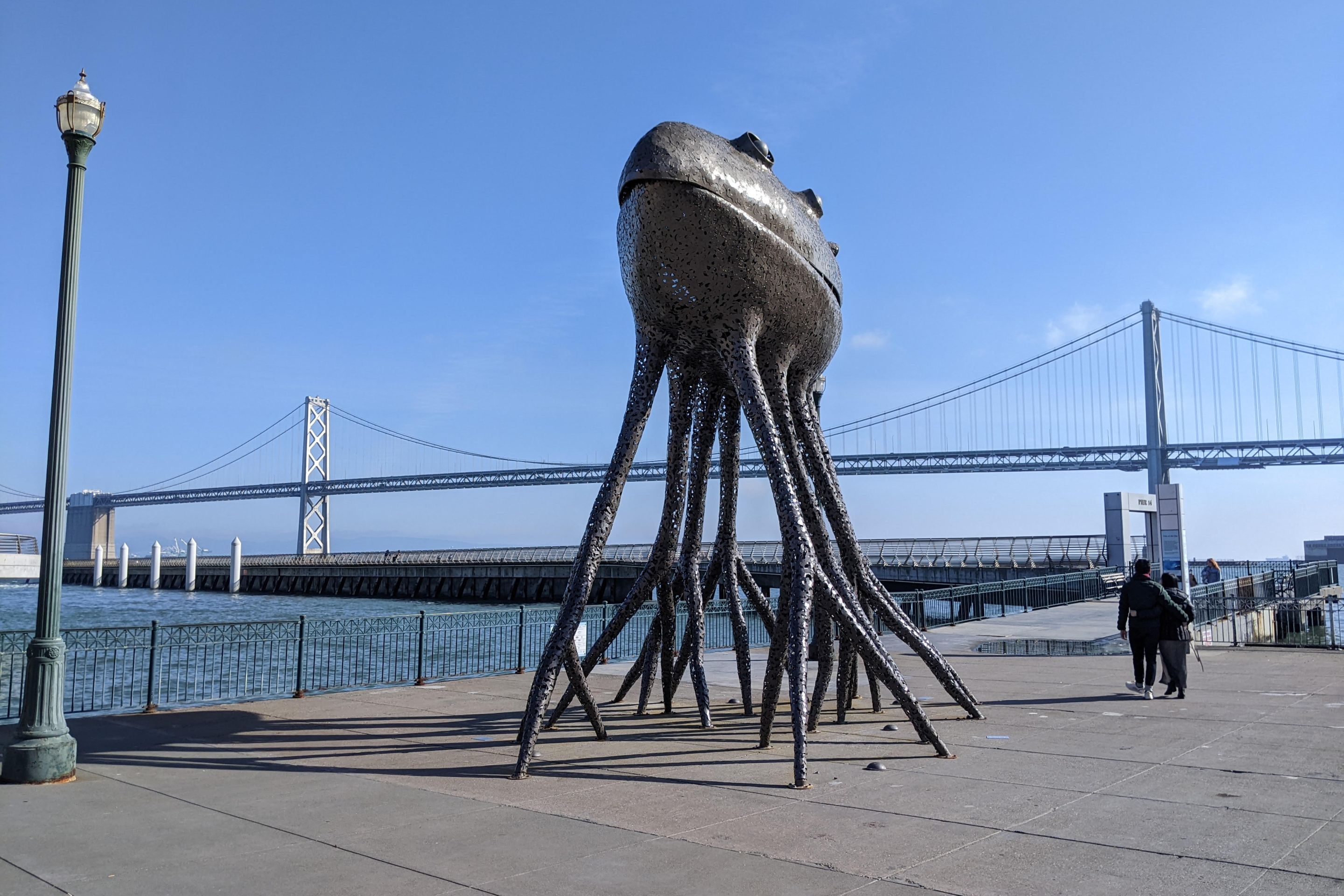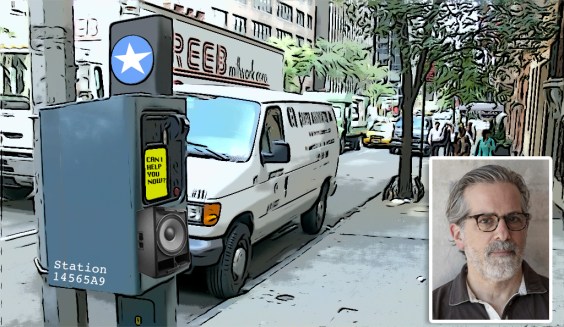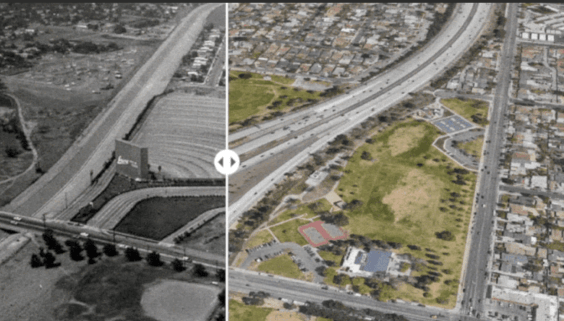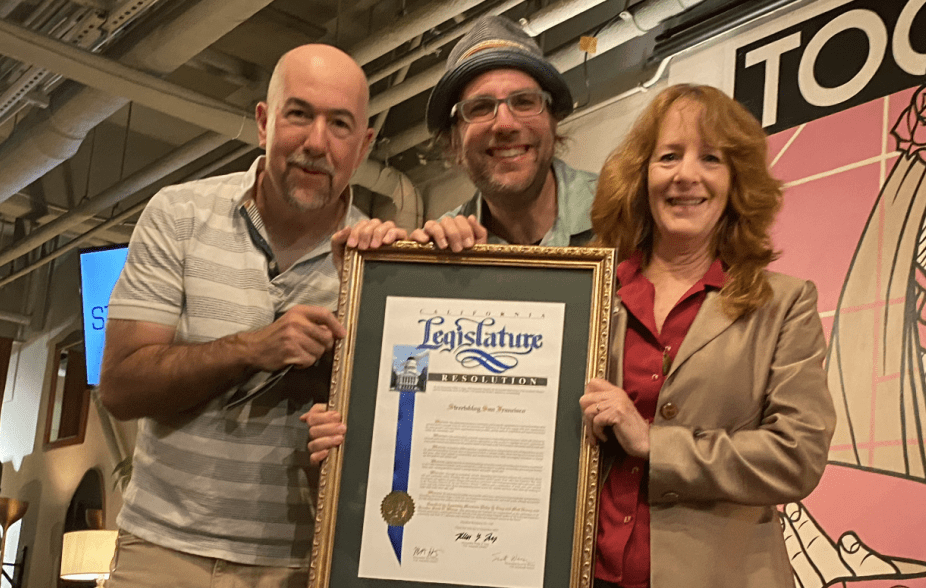If you're searching for reasons to feel positive about the future, the street transformations pictured below are a good start. Earlier this month we asked readers to send in their nominations for the best American street redesigns of 2014. These five are the finalists selected by Streetsblog staff. They include new car-free zones, substantial sidewalk expansions, superb bike infrastructure, awesome safety upgrades, and exclusive transit lanes.
Which deserves the distinction of being named the "Best Urban Street Transformation of 2014"? We're starting the voting today and will post a reminder when we run the rest of the Streetsblog USA Streetsie Award polls next Tuesday. Without further ado, here are the contenders:
Western Avenue, Cambridge, Massachusetts
The Western Avenue road diet narrowed dangerously wide traffic lanes on this one-way street to make room for safer pedestrian crossings, a raised bike lane, and bus bulbs. Brian DeChambeau of the Cambridge Community Development Department, the lead agency on the project, adds these details about the redesign:
Before the project began, the street cross-section included two 12’-wide (sometimes 12’+) vehicle travel lanes and a 5’ bicycle lane with parking on both sides. Along with heavy vehicle and truck volumes, it was an uninviting street to live, ride, and walk on. The reconstruction removed a vehicle travel lane for the first three blocks of the corridor and narrowed the travel lanes in order to facilitate construction of a protected cycle track, enhanced pedestrian crossings, and expanded park space. The cycle track is also separated from pedestrians on the sidewalk by tree plantings and light fixtures. Traffic calming features, including raised side street crossings, were implemented, along with bus stop curb extensions to improve transit efficiency and to create space for bus shelters. Other curb extensions created space for cycle track sight lines and landscaping, as well as improved bicycle parking. The project also includes two new bicycle traffic signals, which were added at key intersections along the corridor.
Penn Avenue, Pittsburgh
The Penn Avenue protected bike lane in Pittsburgh was one of first three that new Mayor Bill Peduto added in short order during his first year in office. Penn Avenue runs through the heart of downtown Pittsburgh. The two-way bike lane is about one mile long and cost about $73,000 to construct, according to People for Bikes, which provided technical assistance to the city.
E Street, San Bernardino, California
E Street in downtown San Bernardino was transformed this year with center-running transit lanes, part of the award-winning sbX Green Line bus rapid transit project. The Green Line connects California State University, San Bernardino, and Loma Linda University.
Submitter Marven Norman writes that most of the line's six miles of dedicated bus lanes are on E Street. The city of San Bernardino also enacted new zoning to reduce parking requirements and promote walkable development by the Green line. The line is free for CSUSB students, and it is helping the local economy rebound from the Great Recession, Norman writes.
Broadway, Seattle
Broadway is a major north-south street that runs through some of the densest parts of Seattle. The street overhaul completed this year includes a two-way protected bike lane. A new streetcar route is expected to start service in 2015.
Washington Avenue, Minneapolis

Green Line light rail service debuted on Washington Avenue in Minneapolis this year, quickly exceeding ridership projections. Trains on a dedicated, center-running right-of-way have been accompanied by other changes to Washington Avenue, including some car-free zones, center-median plazas, and shared bus and bike lanes next to the curb. Dan Reed at Greater Greater Washington reported that the area is seeing a lot of new development and activity thanks to the overhaul.
Those are your finalists, now it's up to you to decide. Which is the Best Urban Street Transformation of 2014?















